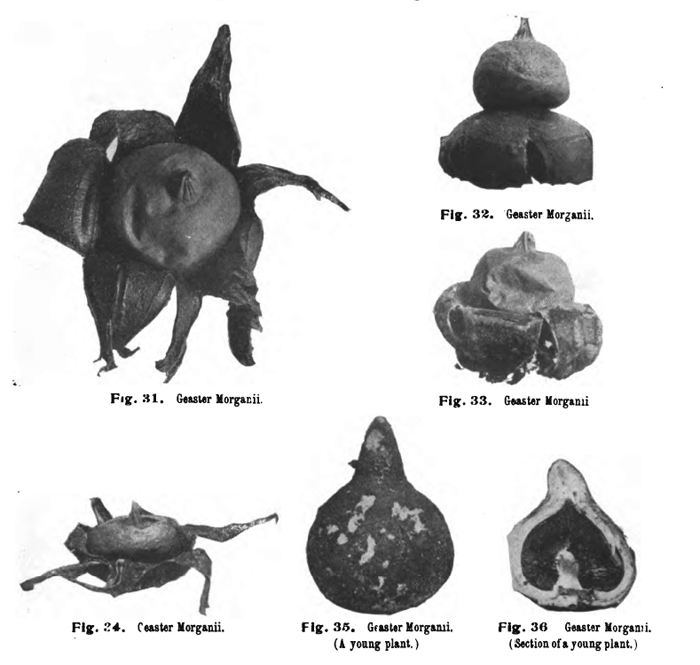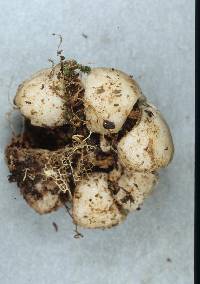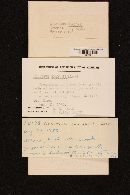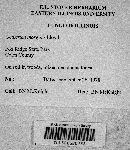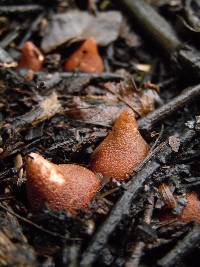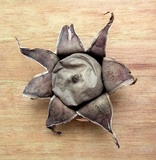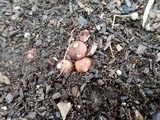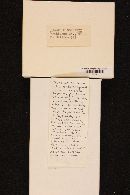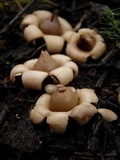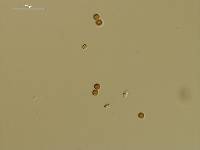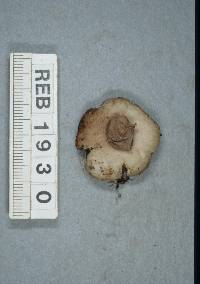
|
|
|
|
Family: Geastraceae
|
Geaster morganii Lloyd: Lloyd, C.G. 1902. The Geastrae. Mycological Writings 7: 19-20. Young plant acute. Exoperidium cut beyond the middle to seven to nine acute segments. In herbarium specimens usually saccate but sometimes revolute. Mycelial layer closely adherent, compared to previous species relatively smooth. (*) Fleshy layer when dry, thin closely adherent. Endoperidium globose, sessile. Mouth sulcate, indefinite. Columella globose-clavate. Capillitium thicker than the spores. Spores small, globose, 4 mc, almost smooth.
Specimens in our Collection. Ohio, Mr. Spurlock, W. H. Aiken, C. G. Lloyd. Explanation of Figures. Figs. 31, 32 and 33. Specimens from Mr. Spurlock. Figs. 34, 35 and 36. Collected by author; all from immediate vicinity of Cincinnati. Figs. 35 and 36 from fresh specimens, others from dried specimens.
|
|
|
|

